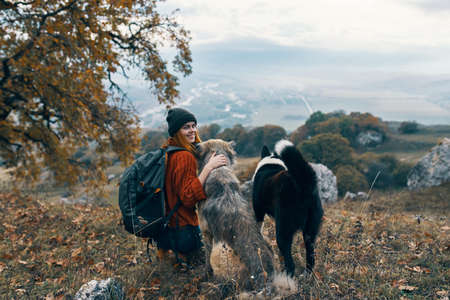Overview of the Wonderland Trail
The Wonderland Trail is one of the most iconic backpacking routes in the United States, circling the base of Mount Rainier in Washington State. This 93-mile (150 km) loop takes hikers on a journey through some of the Pacific Northwest’s most breathtaking wilderness, offering panoramic views of glaciers, alpine meadows bursting with wildflowers, old-growth forests, and rushing rivers fed by snowmelt from Mount Rainier itself.
What Makes the Wonderland Trail Special?
The Wonderland Trail is not just another hiking trail—it’s a true adventure that challenges and rewards backpackers with its rugged terrain, ever-changing scenery, and unique Pacific Northwest ecosystem. Here are some reasons why it stands out:
| Feature | Description |
|---|---|
| Complete Loop | Circumnavigates the entire base of Mount Rainier, so every day brings new landscapes and perspectives. |
| Diverse Terrain | Hikers experience everything from dense forests and river valleys to alpine ridges and glacier views. |
| Challenging Elevation | Total elevation gain is over 22,000 feet—be ready for lots of ups and downs! |
| Wildlife Encounters | Keep an eye out for black bears, marmots, deer, mountain goats, and countless bird species. |
| Backcountry Camping | A true wilderness experience with designated campsites spaced out along the route. |
Why Backpackers Love the Wonderland Trail
The Wonderland Trail has earned legendary status among American hikers because it checks all the boxes for a bucket-list adventure: challenging mileage, jaw-dropping scenery at every turn, and a sense of accomplishment that comes from completing one of the country’s premier long-distance hikes. With well-maintained trails and a permit system that preserves its wild feel, backpackers can fully immerse themselves in the magic of Mount Rainier National Park.
2. Planning Your Wonderland Trail Backpacking Trip
Essential Permits: What You Need to Know
If you want to backpack the full Wonderland Trail, you’ll need a wilderness permit. These permits are required for all overnight trips and help keep crowds manageable and protect Mount Rainier’s stunning environment. The demand is high, so planning ahead is key!
Permit Application Basics
| Application Window | How to Apply | Fees |
|---|---|---|
| March 15–May 31 (lottery), then rolling | Online at recreation.gov | $20 reservation fee per trip; $6/person/night |
Pro tip: Most permits are snatched up in the early lottery, but there are some available later on a first-come, first-served basis.
Trail Logistics: Route Planning & Mileage
The Wonderland Trail loops around Mount Rainier for about 93 miles, with total elevation gain surpassing 23,000 feet. Most hikers take 9–13 days to complete the whole loop. You’ll need to plan your daily mileage based on your fitness and preferred pace—plus the location of designated campsites.
Main Wonderland Trailheads
| Trailhead Name | Parking Availability | Popular Start Point? |
|---|---|---|
| Longmire | Good (fills up quickly in summer) | Yes |
| Mowich Lake | Limited (remote road access) | No, but good for section hikes |
| White River/Sunrise | Adequate (can fill weekends) | Yes |
| Carter Falls/Box Canyon/Ohanapecosh | Varies by spot | No, used for alternate entry points or shorter itineraries |
Best Times to Go: Weather & Crowds
The Wonderland Trail is typically accessible from mid-July through late September. Earlier or later can mean deep snow or challenging river crossings. July offers wildflowers but lingering snow at higher elevations. August is prime time—most snow is gone, days are long, and bugs are manageable. September brings fewer crowds and vibrant fall colors, but also cooler temps and a greater chance of rain.
| Month | Trail Conditions | Crowds/Bugs Level |
|---|---|---|
| July | Patches of snow, lots of wildflowers | High/Moderate bugs |
| August | Driest and most stable weather | Very high/Low to moderate bugs |
| September | Crisp air, fall colors, fewer bugs | Lower/Few bugs |
Campsite Reservations: How It Works & Top Tips
You must stay at designated backcountry campsites each night—you can’t just camp anywhere along the trail. When you apply for your permit, you’ll request specific campsites for each night. Popular sites (like Indian Bar or Summerland) go fast! Have backup options ready when applying.
Navigating the Reservation System:
- Create an account at recreation.gov well before the application window opens.
- Select your ideal itinerary and have alternatives handy—flexibility helps!
- If you don’t get your first picks in the lottery, check back often for cancellations or try walk-up permits (released daily at park ranger stations).
Wonderland Trail Campsite Quick Facts:
- Total number of campsites: About 18 along the trail loop.
- Amenities: Group sites (book separately), bear poles for food storage, pit toilets.
Treat every day as an adventure—weather shifts fast and river crossings can change conditions overnight. A flexible attitude goes a long way out here!

3. Packing and Gear Recommendations
Must-Have Gear for Wonderland Trail Weather
The Wonderland Trail wraps around Mount Rainier and throws just about every kind of weather at you—rain, snow, and sunny bluebird days can all happen in one trip. Here’s what you’ll want in your pack to stay comfortable and safe.
| Weather | Essential Gear |
|---|---|
| Rain | Waterproof rain jacket & pants, pack cover or dry bags, quick-dry clothing, waterproof boots or trail runners |
| Snow/Cold | Insulated jacket (down or synthetic), warm hat & gloves, thermal baselayers, gaiters, microspikes (early/late season) |
| Sun/Heat | Wide-brim hat or cap, sunglasses with UV protection, sunscreen (SPF 30+), lightweight long sleeves for sun protection |
Lightweight Backpacking Setups
The Wonderland Trail is a strenuous trek with plenty of elevation gain. The lighter your pack, the happier your knees (and your whole body) will be. Here are some ultralight tips:
- Tent/Shelter: Choose a lightweight tent or consider a tarp if you’re experienced.
- Sleeping System: Use a compact sleeping bag rated for 20-30°F and an inflatable sleeping pad.
- Cooking: Bring a single-burner stove like a Jetboil or MSR PocketRocket with a small fuel canister.
- Clothing: Layer up with moisture-wicking fabrics and skip the extras—one hiking outfit and one camp outfit is usually enough.
- Other Essentials: Don’t forget a headlamp, first-aid kit, map/GPS device (cell service is spotty!), and water filtration system.
Packing Checklist Overview
| Category | Recommended Item(s) | Weight-Saving Tips |
|---|---|---|
| Shelter & Sleep | Tent/tarp, sleeping bag, pad | Share tent with partner, use quilt instead of sleeping bag |
| Cooking & Food Storage | Stove/pot, bear canister, utensils, food bag | No-cook meals or dehydrated food to cut weight/bulk |
| Clothing | Base layers, insulation layer, rain gear, hat/gloves/socks | Synthetic/wool blends dry fast and stay light when wet |
| Hydration & Water Treatment | Bottles/reservoirs, filter or purifier tablets/drops | Steripen or Sawyer Squeeze for minimal weight/space |
| Navigation & Safety | Map/compass/GPS, headlamp, first aid kit, multitool/knife, whistle | Lithium batteries last longer and weigh less than alkalines |
Bears & Food Storage: What You Need to Know
The park requires that all backpackers use either an approved bear canister or hang their food using the provided bear poles at designated campsites. Bear canisters are highly recommended because they’re simple to use and always keep your food safe from critters—bears included!
Bear Canister Quick Facts
- You can rent bear canisters at the Paradise Wilderness Information Center or bring your own approved model (like BearVault or Garcia).
- Bears aren’t the only animals interested in your snacks—mice and marmots are notorious food thieves on the Wonderland!
- If you opt to hang your food at campsites with bear poles, always double-check that you’ve secured everything before leaving camp.
Pro Tip: Pack Out All Trash
The Leave No Trace ethic is big in Mount Rainier National Park. Make sure every crumb of trash leaves the wilderness with you—including used TP and hygiene products—so this epic trail stays beautiful for everyone who comes after you.
4. Trail Highlights and Must-See Spots
The Wonderland Trail is a 93-mile adventure packed with jaw-dropping scenery, iconic viewpoints, unforgettable river crossings, wildflower meadows, and side trips that make every mile worth it. Here’s your guide to the most epic sections and can’t-miss spots along this legendary loop around Mount Rainier.
Epic Sections and Scenic Viewpoints
| Section | What Makes It Special |
|---|---|
| Spray Park | Famous for vibrant wildflower meadows in July and August, plus panoramic views of the mountain. Great place to spot marmots! |
| Summerland & Panhandle Gap | Stunning alpine meadows, glaciers, and some of the best sunrise views. Watch for mountain goats near Panhandle Gap. |
| Indian Bar | Breathtaking river valley with waterfalls, wildflowers, and dramatic rock formations. A favorite overnight stop for many backpackers. |
| Mowich Lake to Ipsut Pass | Lush forests, crystal-clear lakes, and the chance to detour to Tolmie Peak for an epic lookout over Mount Rainier. |
| Emerald Ridge | A high ridge with sweeping vistas of glaciers and the Tahoma Glacier icefall—a true highlight at sunset or sunrise. |
Unforgettable River Crossings
- Carbon River: Cross a suspension bridge over glacial waters—thrilling but safe for most backpackers.
- Nisqually River: Fast-moving water and braided channels; always check conditions before crossing and use caution.
- White River: Known for its milky color from glacial silt—an iconic Wonderland experience.
Bursting Wildflower Meadows
If you’re hiking mid-summer (July to early August), keep your camera ready! The meadows at Spray Park, Summerland, Indian Henry’s Hunting Ground, and Klapatche Park explode with lupine, paintbrush, avalanche lilies, and more. These fields are postcard-perfect and offer some of the best photo ops on the trail.
Side Trips You Shouldn’t Miss
- Tolmie Peak Lookout: A short side trip from Mowich Lake gives you one of the most iconic fire lookout views in the Pacific Northwest.
- Burroughs Mountain: Take a day hike from Sunrise Camp for up-close glacier views—it feels like walking on another planet!
- Mystic Lake: Perfect for a lunch break or swim (if you’re brave), this serene alpine lake is surrounded by dramatic peaks.
Pro Tips for Enjoying the Highlights
- Pace yourself—these spots deserve time to soak in the beauty.
- If wildflowers are your goal, plan for late July hikes.
- Mornings often have clearer skies for photography at viewpoints like Sunrise or Emerald Ridge.
- Always check river conditions before crossing—spring melt can make them challenging.
- Add a layover day at favorite camps like Indian Bar or Mowich Lake if your itinerary allows!
5. Safety, Trail Etiquette, and Leave No Trace
Wildlife Safety: Sharing the Wonderland with Mount Rainier’s Residents
Backpacking the Wonderland Trail means venturing into a true wilderness where black bears, mountain goats, marmots, and other wildlife call home. Always keep a safe distance from all animals—never feed or approach them for photos. Store food using bear canisters or approved hanging methods at designated campsites. If you see a bear on the trail, talk calmly, make yourself look big, and slowly back away—never run. Familiarize yourself with local wildlife safety tips before heading out.
Wildlife Safety Quick Guide
| Animal | What to Do |
|---|---|
| Black Bear | Stay calm, speak firmly, back away slowly; use bear spray if threatened |
| Mountain Goat | Give space; avoid urinating on trail (attracts goats) |
| Marmot/Chipmunk | Do not feed; secure snacks in your pack |
Weather Preparedness: Expect the Unexpected in the Pacific Northwest
The weather on Mount Rainier is famously unpredictable—even in summer. Be ready for rain, sun, wind, and even snow at higher elevations. Always check the latest trail and weather updates before you leave. Dress in layers and pack rain gear, insulating clothes, and waterproof footwear. Remember: hypothermia can occur even in mild conditions if you get wet and cold.
Packing Essentials for Wonderland Trail Weather
| Item | Purpose |
|---|---|
| Rain Jacket & Pants | Protection from rain and wind |
| Synthetic/Wool Layers | Stay warm when wet; dries quickly |
| Hat & Gloves | Adds warmth during chilly mornings/evenings |
| Sunscreen & Sunglasses | Protection from intense sun at high elevations |
PCT Trail Etiquette: The Pacific Northwest Way
The Wonderland Trail is popular with hikers from all over the country—so good trail manners matter! Yield to uphill hikers (they have right of way), step aside for faster groups or those carrying heavy packs, and be friendly—a simple “hello” goes a long way here. Keep voices low to preserve the serenity of nature, and don’t blast music from speakers. When taking breaks or camping, give other hikers space to enjoy their own adventure.
PCT Trail Etiquette Cheat Sheet
| Situation | Etiquette Tip |
|---|---|
| Passing Others on Trail | Yield to uphill hikers; announce your presence before passing |
| Campsites & Rest Areas | Share space respectfully; keep noise down after dark |
| Packed Trails/Bridges | Wait your turn; don’t crowd others crossing narrow sections |
| Litter or Leftover Food | Pack it out! Leave no trace behind. |
Leave No Trace: Protecting Mount Rainier for Generations to Come
The Wonderland Trail is one of America’s treasures—help keep it that way by following Leave No Trace (LNT) principles every step of your journey:
- Plan Ahead & Prepare: Know regulations, pack essentials, and plan meals to minimize waste.
- Travel & Camp on Durable Surfaces: Stay on marked trails and camp only at designated sites.
- Dispose of Waste Properly: Pack out everything—including toilet paper and food scraps.
- Leave What You Find: Don’t pick flowers or take rocks/souvenirs—leave nature as you found it.
- Minimize Campfire Impact: Use a stove for cooking; fires are restricted or banned in many areas.
- Respect Wildlife: Observe quietly from a distance; never feed animals.
- Be Considerate of Other Visitors: Keep noise down and respect everyone’s outdoor experience.
The Wonderland Trail offers unforgettable scenery and adventure—respecting these guidelines ensures it stays wild and beautiful for every hiker who follows in your footsteps!

